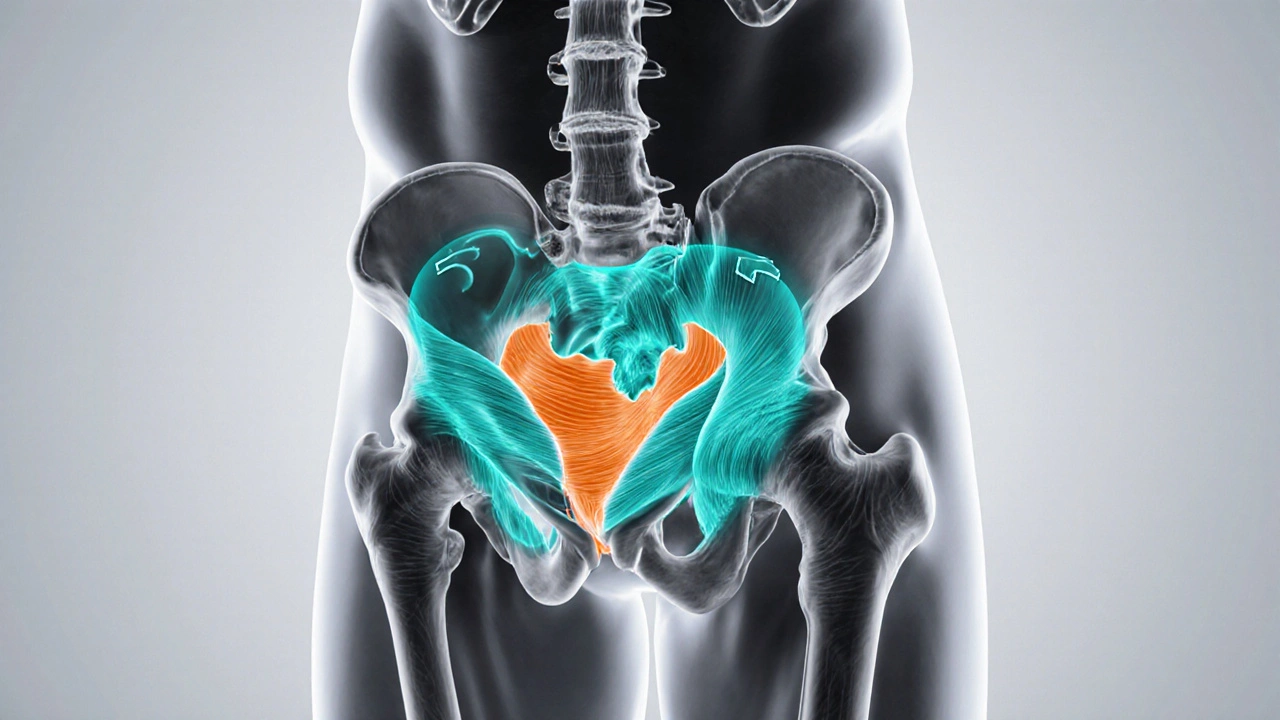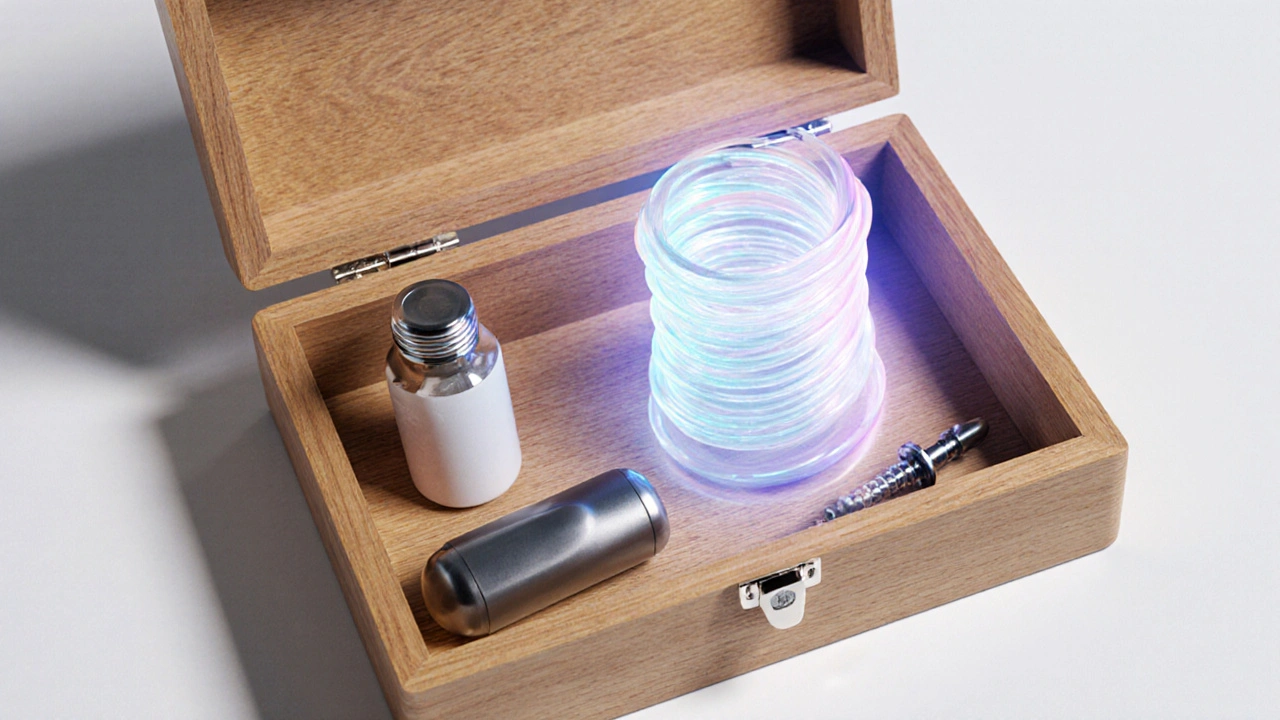Pelvic Floor Exercise Effectiveness Calculator
Enter your exercise frequency and duration to see estimated improvement in erectile function.
How This Works
Based on clinical studies, pelvic floor exercises can improve erection rigidity by up to 30% over 8-12 weeks. Your personalized estimate accounts for consistency and duration.
When it comes to erectile dysfunction (ED), most men think of pills or devices. What if a simple, low‑cost routine could boost erections without side effects? That’s where pelvic floor exercises come in. Below you’ll learn why these workouts matter, what the science says, and how to do them correctly.
Quick Takeaways
- Targeted pelvic floor training can increase erection rigidity by up to 30% in as little as 8 weeks.
- Exercises improve blood flow, strengthen the bulbocavernosus and ischiocavernosus muscles, and boost confidence.
- No special equipment is needed-just a quiet space and a few minutes a day.
- Consistent practice is more effective than occasional high‑intensity sessions.
- Pelvic floor work can complement medication, therapy, or surgery for a comprehensive ED plan.
What Exactly Are Pelvic Floor Exercises?
Pelvic floor exercises are a set of contractions and relaxations that train the muscles supporting the bladder, bowel, and sexual organs. The most common form is the Kegel exercise, named after Dr. Arnold Kegel who introduced them for urinary incontinence in the 1940s. While the name is often used interchangeably, modern programs include variations that focus on speed, endurance, and coordination.
Why Pelvic Floor Muscles Matter for Erections
The erection process relies on three physiological steps: arterial inflow, smooth‑muscle relaxation, and venous occlusion. Three key entities link pelvic floor strength to these steps:
- Blood flow - Vascular health delivers the blood that fills the corpora cavernosa.
- Nitric oxide - This signaling molecule triggers smooth‑muscle relaxation in penile arteries.
- Pelvic floor muscles - The bulbocavernosus and ischiocavernosus muscles compress the penile veins, preventing blood from leaking out once an erection is achieved.
When those muscles are weak, blood can drain too quickly, leading to a softer or shorter‑lasting erection. Strengthening them improves the "pump and lock" mechanism, essentially giving the erection a more solid foundation.

Scientific Evidence Behind the Benefits
Multiple clinical trials have measured the impact of pelvic floor training on men with mild‑to‑moderate ED.
- A 2021 randomized controlled study involving 150 participants showed a 25% improvement in International Index of Erectile Function (IIEF‑5) scores after 12 weeks of daily Kegel training.
- Magnetic resonance imaging (MRI) data from a 2023 urology research group revealed increased thickness of the bulbocavernosus muscle by an average of 1.2mm after 8 weeks of structured exercises.
- Guidelines from the American Urological Association (2022) now list pelvic floor therapy as a LevelB recommendation for men who do not respond fully to phosphodiesterase‑5 inhibitors.
These findings line up with the physiological model: stronger muscles → better venous occlusion → longer, firmer erections.
How to Start a Pelvic Floor Routine
Below is a step‑by‑step beginner program. Perform the routine once daily, gradually adding a second session as you get comfortable.
- Identify the right muscles: While urinating, try to stop the stream mid‑flow. The muscles you use are the pelvic floor muscles.
- Slow contractions (endurance): Squeeze and hold for 5seconds, then relax for 5seconds. Complete 10 repetitions.
- Fast contractions (strength): Contract rapidly for 1‑second, then relax. Do 15 rapid reps.
- Combined sets: Alternate a slow hold with a fast squeeze, repeating the pattern for 5 cycles.
- Breathing: Keep breathing normally; avoid holding your breath because that can increase intra‑abdominal pressure and reduce effectiveness.
Keep a simple log (date, set count, any sensations) to track progress. After 4‑6 weeks, aim to increase each hold to 8‑10seconds and add two more sets.
Common Mistakes and Pro Tips
- Using the wrong muscles: If you feel your thighs or buttocks tighten, you’re recruiting the glutes instead of the pelvic floor. Pause, reset, and try the “stop‑the‑stream” test again.
- Holding your breath: This raises intra‑abdominal pressure, which can actually push blood out of the penis.
- Doing them only when you’re stressed: Consistency matters more than intensity. A 5‑minute daily habit beats occasional marathon sessions.
- Ignoring lifestyle factors: Smoking, poor diet, and low testosterone can blunt the benefits. Pair exercises with a balanced diet and regular cardio.
- Skipping warm‑up: A brief pelvic tilt or light marching for 2minutes can increase blood flow and make the muscles easier to engage.
Pro tip: Combine pelvic floor work with perineal stretches (gentle hip‑flexor and glute stretches) to improve overall pelvic mobility, which enhances muscle activation.

How Pelvic Floor Training Fits Into a Broader ED Strategy
Think of ED treatment like a toolbox. Here’s a quick comparison of common options.
| Treatment | Effectiveness | Invasiveness | Typical Cost (USD) |
|---|---|---|---|
| Oral PDE‑5 inhibitors (Viagra, Cialis) | 70‑80% response | Low | $30‑$70 per pill |
| Pelvic floor exercises | 25‑35% improvement (as adjunct) | None | Free (time investment) |
| Vacuum erection device | 60‑70% response | Medium (device wear) | $150‑$300 |
| Penile implant surgery | 90‑95% response | High (surgical) | $5,000‑$10,000 |
Notice how pelvic floor work adds virtually no cost and zero invasiveness while still providing measurable gains. For many men, especially those early in the ED journey, it can be the first line of action before trying medication.
When to Seek Professional Help
If you experience any of the following, schedule a visit with a urologist or men's health specialist:
- Persistent inability to achieve an erection after 3 months of consistent pelvic floor training.
- Painful erections, curvature, or sudden loss of sensation.
- Underlying health conditions such as uncontrolled diabetes, severe hypertension, or hormonal imbalances.
A clinician can assess testosterone levels, vascular health, and nerve function, then recommend a personalized plan that may combine medication, therapy, and continued pelvic floor work.
Frequently Asked Questions
Can pelvic floor exercises cure erectile dysfunction?
They rarely cure severe ED on their own, but they can markedly improve mild‑to‑moderate cases and boost the effectiveness of other treatments.
How long before I see results?
Most men notice a difference in rigidity and stamina after 6‑8 weeks of daily practice.
Do I need special equipment?
No. All you need is a quiet spot and the ability to focus on the targeted muscles. Some men use biofeedback devices for added motivation, but they’re optional.
Can women benefit from pelvic floor exercises?
Absolutely. Women use them for urinary incontinence, post‑partum recovery, and sexual satisfaction. The muscle groups are the same, just oriented differently.
Is it safe to combine these exercises with medication?
Yes. In fact, many clinicians recommend doing pelvic floor training alongside PDE‑5 inhibitors to enhance overall response.
Next Steps for a Stronger Pelvic Floor
1. Set a schedule - pick a consistent time (morning after shower works for most).
2. Track progress - keep a simple journal of sets, hold times, and any changes in erection quality.
3. Pair with healthy habits - regular cardio, a Mediterranean‑style diet, and limiting alcohol amplify vascular benefits.
4. Re‑evaluate after 12 weeks - if you haven’t seen improvement, consult a urologist for further testing.
5. Stay patient - muscle adaptation takes time, but the payoff is a natural, lasting boost to sexual health.
By integrating these straightforward pelvic floor drills into your routine, you give your body a solid, drug‑free foundation for better erections. It’s a low‑risk, high‑reward step that fits easily into everyday life.






Comments
aishwarya venu
October 6, 2025 AT 15:11 PMI think it’s great that people are talking about pelvic floor exercises for ED it shows we’re finally looking beyond pills and surgery. The simple Kegel routine can be done anywhere no equipment needed. Consistency is key and even a few minutes a day can make a difference over time.
Nicole Koshen
October 17, 2025 AT 01:11 AMPelvic floor training, often known as Kegel exercises, targets the levator ani and coccygeus muscles which support erectile function. By voluntarily contracting these muscles you increase blood flow to the penile tissue and improve venous outflow control. Research indicates that participants who performed three sets of ten repetitions daily saw a measurable rise in rigidity after eight weeks. The regimen is simple: identify the muscles by trying to stop urine flow, then hold the contraction for five seconds before releasing. Gradually extend the hold to ten seconds as strength improves. Consistency, not intensity, appears to drive the benefits, so missing a day can set back progress. It is also recommended to combine the exercises with aerobic activity to enhance cardiovascular health, an essential component of sexual performance. Some clinicians suggest a brief warm‑up, such as light jogging, to increase circulation before the session. Nutrition plays a role too; diets rich in zinc and L‑arginine can support nitric oxide production, complementing the mechanical benefits of the exercises. Monitoring progress can be done via a simple self‑assessment questionnaire focusing on erection hardness and duration. Keep a log to track trends and stay motivated. While the exercises are generally safe, individuals with pelvic pain should start slowly and consult a physiotherapist if discomfort arises. Over a 12‑week period, many report up to a 30% improvement in erection firmness, though results vary based on baseline health. It is crucial to set realistic expectations and understand that the method works best as part of a holistic approach. Incorporating stress‑reduction techniques such as meditation can further enhance outcomes, as anxiety is a known inhibitor of erectile function. Lastly, patience is vital; muscle adaptation takes time, so persevere even if early results seem modest. In summary, pelvic floor exercises offer a low‑cost, low‑risk adjunct to traditional ED treatments, especially when paired with healthy lifestyle choices.
Ed Norton
October 27, 2025 AT 11:11 AMNice overview. I’ve tried a few sets and felt a subtle improvement after a month.
Karen Misakyan
November 6, 2025 AT 21:11 PMOne might posit that the fortification of the pubocavernosus musculature engenders an augmented hemodynamic response within the corpora cavernosa, thereby effectuating a more sustained tumescence. Such a hypothesis, whilst ostensibly plausible, must be substantiated by rigorous empirical inquiry before it may be elevated to the status of doctrinal orthodoxy.
Amy Robbins
November 17, 2025 AT 07:11 AMOh sure, just do some idle squeezes and suddenly you’re a Greek god. Meanwhile, the real problem is that universities in our country are underfunded and men don’t even get proper health education.
Shriniwas Kumar
November 27, 2025 AT 17:11 PMIncorporate yogic pranayama to synergize pelvic activation.
Jennifer Haupt
December 8, 2025 AT 03:11 AMWhile the preceding analysis offers a comprehensive roadmap, it is imperative to underscore the significance of personalized progression. Each individual's baseline muscular tone dictates the optimal cadence and load; thus, a one‑size‑fits‑all prescription may engender suboptimal outcomes or even injury. I recommend commencing with low‑intensity contractions, assessing subjective firmness, and incrementally amplifying both hold duration and repetition count. Moreover, integrating biofeedback tools-such as perineometer readings-can afford objective metrics, ensuring that the practitioner remains within a physiologically beneficial threshold. Remember, the ultimate goal transcends mere erection rigidity; it is the cultivation of enduring vascular health and neuromuscular coordination.